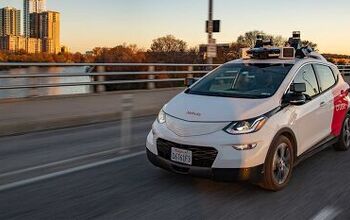June 2017 U.S. Auto Sales Likely Slid for a Sixth Consecutive Month As Incentives and Transaction Prices Rise
Automakers likely sold fewer than 1.5 million new vehicles in the United States in June 2017, a modest decrease of around 2 percent compared with June 2016.
While auto sales remain high by historic standards — 1.48 million sales would still make June 2017 more than 15-percent better than the 1.33 million June average from 2011-2015 — June nevertheless represents the persistence of a negative trend.
After 2016 ended with a December boom to close out the highest-volume year on record, auto sales in the United States declined on a year-over-year basis in each of 2017’s first five months. A 2-percent drop in June, worth roughly 30,000 lost sales, will run the streak of decreases to a full half-year.
The American auto industry’s decline comes as automakers continue to incentivize heavily and, fortunately for manufacturers, consumers grow ever more willing to pay higher prices.
LMC Automotive, Reuters reports, expects the average per-vehicle incentive to rise to $3,661 in June 2017, the highest level for June in history. At the same time, LMC forecasts record June transaction prices of $31,720.
Kelley Blue Book, anticipating an even more significant decline, expects modest year-over-year losses at General Motors, Nissan, American Honda, and Hyundai-Kia; heftier declines at Ford Motor Company and Fiat Chrysler Automobiles; a modest Toyota improvement, and more meaningful gains at the Volkswagen Group and Subaru. Ford and FCA will likely be the big losers of market share.
J.D. Power, in conjunction with LMC, says light truck sales accounted for 64 percent of June’s retail sales, marking a full year in which light trucks owned more than 60 percent of the market; cars less than 40 percent. Of the roughly 1.48 million vehicles likely sold in June, 21 percent were produced for fleets.
Automakers continue to push incentives as a means of reducing inventory, which, according to Automotive News, stood at 69 days of supply heading into June. (General Motors, Mitsubishi, and Volkswagen all had more than 90 days’ worth of stock at the beginning of June.)
Yet while automakers are elevating incentives in order to clear out the cars for which demand is shrinking so fast, average transaction prices are rising because the vehicles consumers are buying and leasing are often of the more costly variety.
While KBB believes compact car sales fell 5 percent in June and midsize car sales tumbled 11 percent, U.S. sales of full-size pickups, compact SUVs/crossovers, and midsize SUVs/crossovers bucked the industry downturn. In May, KBB said the average transaction price in those three categories were $46,522, $28,539, and $37,682, respectively. On the other hand, in those two car categories that make up the bulk of passenger car sales, transaction prices averaged $20,595 and $25,209 for compact and midsize cars.
[Image: FCA]
Timothy Cain is a contributing analyst at The Truth About Cars and Autofocus.ca and the founder and former editor of GoodCarBadCar.net. Follow on Twitter @timcaincars.
More by Timothy Cain
Latest Car Reviews
Read moreLatest Product Reviews
Read moreRecent Comments
- Doug brockman There will be many many people living in apartments without dedicated charging facilities in future who will need personal vehicles to get to work and school and for whom mass transit will be an annoying inconvenience
- Jeff Self driving cars are not ready for prime time.
- Lichtronamo Watch as the non-us based automakers shift more production to Mexico in the future.
- 28-Cars-Later " Electrek recently dug around in Tesla’s online parts catalog and found that the windshield costs a whopping $1,900 to replace.To be fair, that’s around what a Mercedes S-Class or Rivian windshield costs, but the Tesla’s glass is unique because of its shape. It’s also worth noting that most insurance plans have glass replacement options that can make the repair a low- or zero-cost issue. "Now I understand why my insurance is so high despite no claims for years and about 7,500 annual miles between three cars.
- AMcA My theory is that that when the Big 3 gave away the store to the UAW in the last contract, there was a side deal in which the UAW promised to go after the non-organized transplant plants. Even the UAW understands that if the wage differential gets too high it's gonna kill the golden goose.


































Comments
Join the conversation
So, check this. Sales are down, avg trans up. To me, this means that general public is buying less cars. But those that have money keep buying more expensive models, hence the avg trans is up. No wonder, recent report shows that only few can truly afford a new car. Now: "heftier declines at Ford Motor Company" Yes! May be I will in the end get Mustang for cheap
I have more faith in auto sales than I do KBB, Kelley Blue Book, who wants to besiege you with ads and block you if you use an ad blocker. So screw u KBB, obviously everything is for sale at your website.